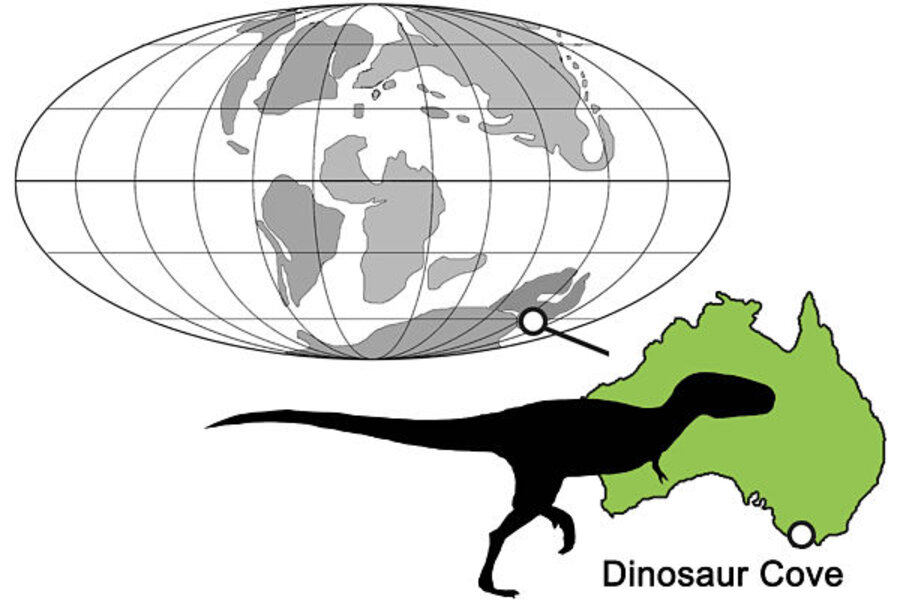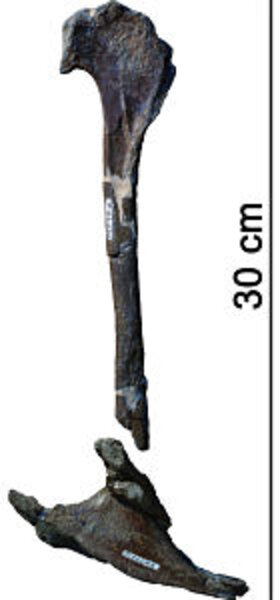Tiny T. rex relative down under? Good on ya!
Loading...
It comes from a land down under, where dinos roamed and feet thundered...(with apologies to Men at Work).
Tyrannosaurus rex was one mean dude/dudette. But so far, the only evidence for T. rex and its ancestors has come from the northern hemisphere.
Now, a team of paleontologists reports finding the remains of an ancestor to T. rex at Dinosaur Cove, just west of Melbourne, Australia. The remains date to 110 million years ago. The researchers say the find is helping to shed light on the evolutionary line that culminated in T. rex and spanned some 100 million years.
The find, along with those from another coastal site at Inverloch, east of Melbourne, are opening a window on an assemblage of species that at the time lived above the Antarctic Circle and in a much colder climate than many people have associated with the thunder lizards.
The evidence in question for an early form of T. rex down south comes in the form of a fossilized hip bone some 30 centimeters (11.8 inches) long. According to Roger Benson, a Cambridge University paleontologist and member of the team reporting the find, the bone displays many features in common with T. rex's equivalent.
The team estimates that this T. rex wannabe was roughly 10 feet long and tipped the scales at 80 kilograms (about 176 pounds). T. rex, by contrast, stretched almost 40 feet nose to tail tip and weighed some four metric tons (8,800 pounds).
The bone "shows that 100 million years ago, small tyrannosaurs like ours might have been found worldwide," Dr. Benson said in a statement.
In a sense, the discovery -- drawn from fossils long exhumed but unstudied in the vaults at the National Museum of Victoria in Melbourne -- could be expected, notes Paul Barrett, a paleontologist at the Museum of Natural History in London and another member of the team reporting the discovery in today's issue of the journal Science. Other so-called "northern" groups of dinosaurs have been appearing in southern hemisphere fossil beds.
The team's find "hints at the possibility" that the remains of other tyrannosaurids may be hiding in Africa, South America, and India as well.
And then there's the size issue. So far, it looks as though T. rex reached its ferocious proportions only in the northern hemisphere. If that remains the case as (or if) more southern tyrannosaurs come to light, it could prove an intriguing study in environmental or other factors that contribute to the rise of bigness in dinosaurs.






